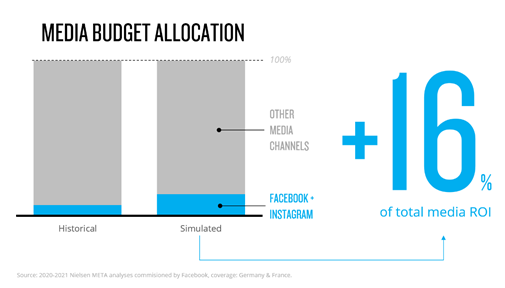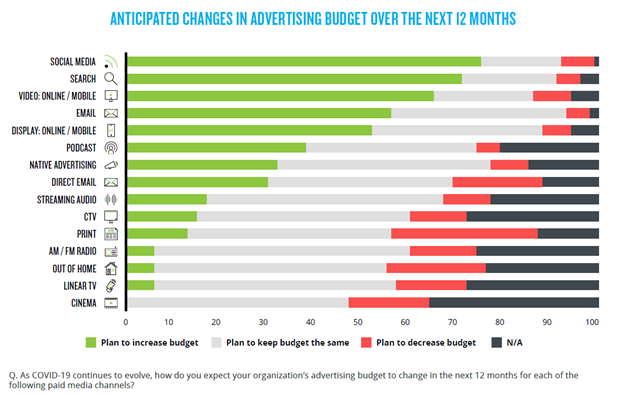Nobody was prepared for what hit the world last year. Business thus had to adapt fundamentally. Financial uncertainty and unclear future taught businesses when and where changes should be made. The changes often occurred while plans for cost cutting, layoffs and marketing budget cuts were prepared. Now, when marketing and promotion start recovering again, brands have to adopt more sophisticated strategies and tactics. Especially if they want to address a broad audience whose habits and preferences have changed - mostly in favour of online shopping. It is the right moment now to reassess corporate strategies. Yaroslav Protsiv, EMEA Client Business Partner in Nielsen, and Gabriel Matwiejczyk, Marketing Science Partner in Facebook, present their views of issues to be taken into consideration at present.
Inactivity may backfire on you in future
Nothing will change consumer behaviour as a global pandemic. Firms and brands have to continue being vigilant and concentrate on new customer habits. Within over a year of living in a pandemic, the changes in behaviour have become deeply rooted in society. Budget cuts in many businesses do not bring much relief in the situation. “The position of brands is not secure enough for them to be inactive. Inactivity significantly decreases customer brand awareness. And so do decisions on short-term advertising suspension. Both pose a threat on long-term income. Our database of long-term effects indicates that businesses that discontinued their advertising in the second half of last year may see a decline in their income of up to 11%,” says Yaroslav Protsiv.
Focus on creativity rather than means of delivery
Management of an effective ad campaign starts with defining goals and making a clear idea of using the full potential of all available media channels. What do modern marketers focus on as soon as they have a strategy in place? Their key priorities include appropriate audience targeting and addressing. “What is disturbing is that marketers plan to engage less with creativity although it was always among their top three priorities,” says Yaroslav Protsiv. “Only 8% of the overall marketing strategy was dedicated to the creative aspect of advertising even in large businesses (with marketing budgets exceeding USD 10 million). There is a risk that even very effectively targeted and newly attracted customers (which may be quite expensive) will put their products in an imaginary “not-considered-at-the-moment” list because the ads would not be attractive enough to them.”
Gabriel Matwiejczyk agrees. “It is even more remarkable in combination with the fact that the general impression made by ad creative accounts for 56% of consumer decisions (according to an analysis of Nielsen Catalina Solutions, 2017). Too many marketers concentrate on how to deliver a message to customers but few think of what exactly they are delivering to them. This is also what we clearly see on our platforms - creative produced for social networks works much better than that taken over from other platforms. In order to help advertisers to better understand creative impacts we closely cooperate with our partners, such as Nielsen, in finding innovative ways of using creative, e.g. in making a marketing mix.”
 Top media tactics by business size, source: Nielsen
Top media tactics by business size, source: Nielsen Top marketing objectives, source: Nielsen
Top marketing objectives, source: NielsenIdentify your best marketing channels
In different industries and brands the most powerful marketing channels may vary significantly. Therefore, you should test, experiment and analyze what channels are the best for your company. The most recent analyses made by Nielsen on the European market show that even with an unchanged marketing budget the total ROI may increase up to 16% on average thanks to better allocation (this specific experiment saw an increase for the benefit of Facebook platform, which corresponded to 7% of budget).
 Source: Nielsen
Source: Nielsen“The most difficult question is how to do it? Luckily, the answer is quite easy and feasible - follow recommendations, implement them in your business and test them again. Theoretically, it sounds easy but in practice it is understandably more difficult. The key is to ensure that advertisers receive feedback based on available measurement to be able to test as fast as possible and learn from mistakes. Selection of tools as well as the emphasis on culture and organisation capacities continue to be a challenge,” explains Gabriel Matwiejczyk.
“As for the media as such, this year marketers move and increase their budgets to digital much more (some even allocate the total media budget to digital only). Social networks are channel number one at the moment where marketers want to invest increasing amounts of money (followed by search engine advertising and online video),” adds Yaroslav Protsiv.
 Planned budget treatment (increase, keep the same, decrease), source: Nielsen
Planned budget treatment (increase, keep the same, decrease), source: NielsenWhile there is a trend to increase digital media budgets, the question is what is the best way of measuring their performance. Marketers often feel that they lack appropriate measuring tools and that they are not able to compare return on ad spend (SOAS) in all channels they use. All this despite the growing number of available solutions. It has to be mentioned that opportunities have significantly narrowed due to the changes in personal data protection principles resulting in lower availability and relevance of data needed and the so called “loss of signal”. This is the reason why the relevance of marketing mix modelling (MMM) has grown substantially.
 How confident are marketers in their ability to measure return on investment for individual channels? Source: Nielsen
How confident are marketers in their ability to measure return on investment for individual channels? Source: Nielsen“While MMM usually contains ROAS - a single figure quantifying results for marketers, there are possibilities for further extension and review why the results are as they are and what to do next. As MMM goes towards its new renaissance, more detailed and more applicable data from all marketing channels is crucial,” explains Yaroslav Protsiv. So that measurement 2.0 could restore marketers’ confidence, it must contain important data, measure performance and be able to identify potential. An excellent illustration of such measurement is the Digital Diagnostic Model created by Facebook for 19 brands from various regions. All methods available were able to identify opportunities to increase the incremental profit by 60.1% on average.
“This model brings a completely new concept: it is not enough to calculate return on investment (ROI). Knowing potential is no less important as it is the potential that can affect decisions on budget allocation. This key idea should be applied on all platforms and as part of all media strategies,” emphasises Protsiv.
Data and its quality
And what do modern marketers concentrate on when a strategy is developed, objectives are defined and appropriate channels are selected? In 2019, the highest priorities included audience targeting and reach while data quality was on fifth place. In 2020, it came third. “The “success” may be driven by the pandemic but nevertheless, it is great that data has become a major issue. Usually, companies have access to substantially higher volumes of data than their agencies (including data on customers, partners, performance of multi-channel campaigns, trends, etc.),” says Yaroslav Protsiv. However, quality of the data is what matters. “Without precise data, marketers have to review accuracy of any input. This means that the entire industry must invest more in education of its leading marketers to know the value of data they use. Do not underestimate the importance of data quality and dedicate as much energy to increasing accuracy of data as you do to your audience targeting and search,” he adds.
Data is expected to be even more valuable tool for marketers in future than today together with other changes in the overall ecosystem. A well-thought out strategy for data administration will thus be necessary. Or it has already been necessary...
Source: mediaguru.cz

